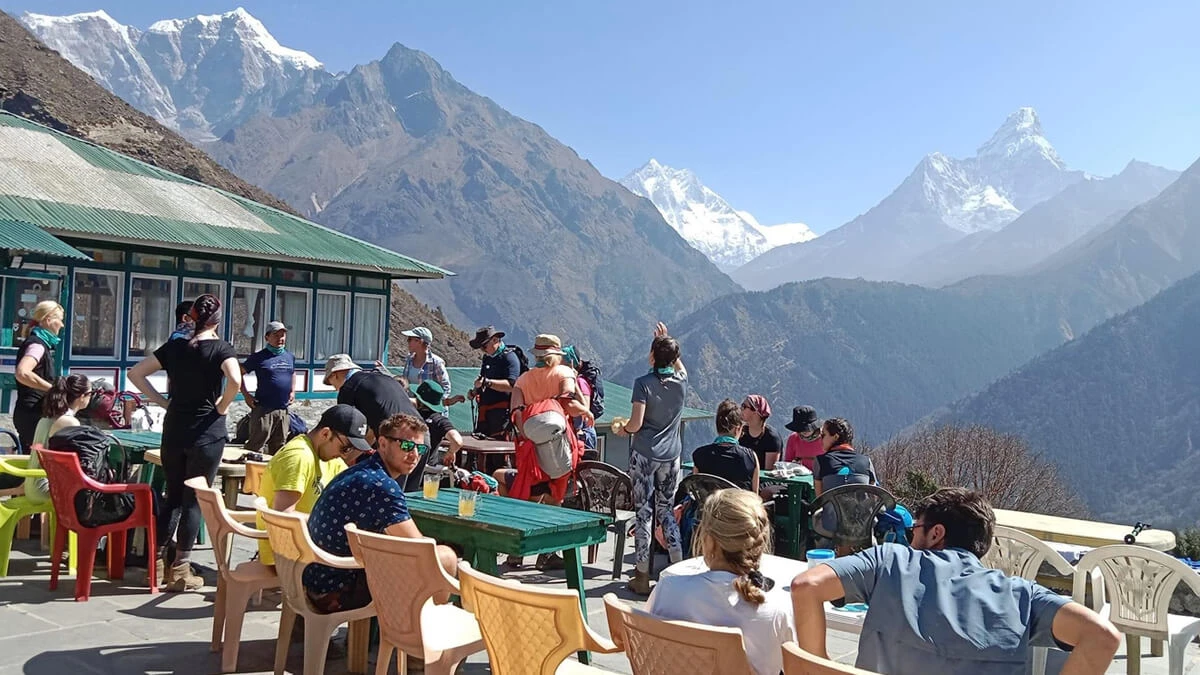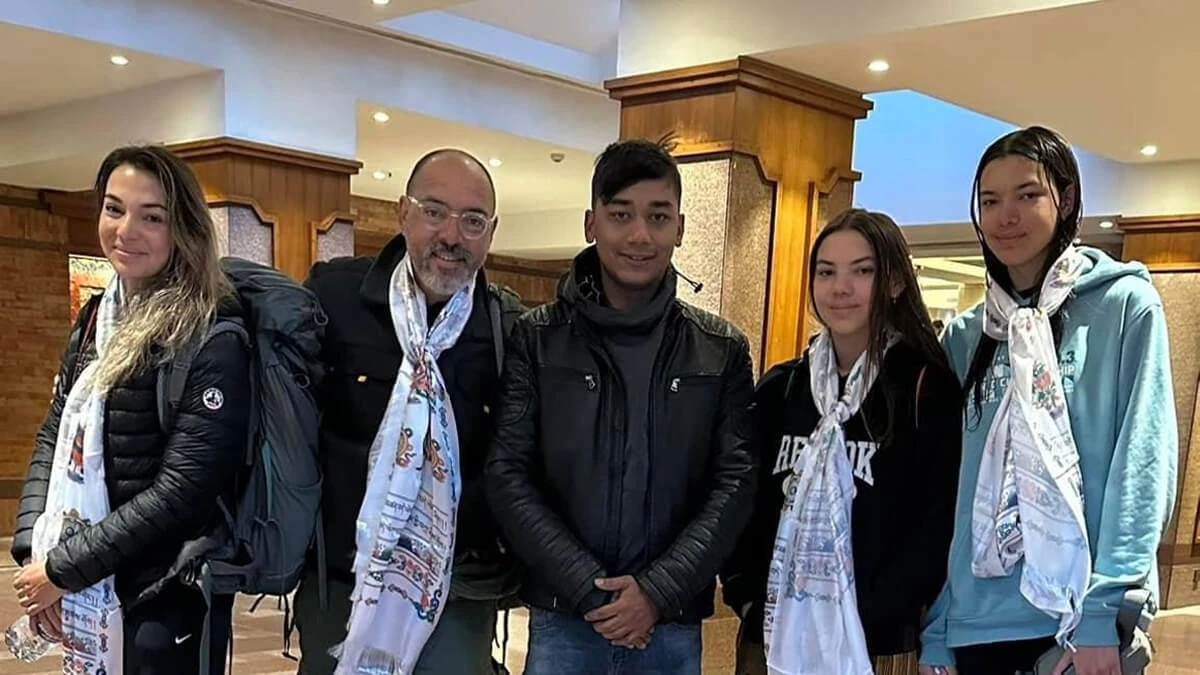Highlights
- A scenic flight to the popular Tenzing-Hillary airport, located at Lukla, which is renowned as one of the highest airports in the world.
- Combine demanding himalayan hiking in the Everest region with smooth jungle activities and cultural immersion in Chitwan National Park.
- Differentiate between the Himalayan landscapes and plains of Terai based on cultures, topographies, climates, etc.
- Witness rare animals of Sagarmatha and Chitwan National Parks, including red pandas, blue sheep, himalayan tahr, himalayan black bears, elephants, one-horned rhinoceroses, ghorials, crocodiles, etc.
- Explore the lively city of Kathmandu to know ancient cultures and Nepal's history through museums, temples, gompas, the late king's royal palaces, wood crafts, sculptures, and authentic architecture.
- Enjoy birding, elephant or jeep safari, Tharu cultural dances, and sunset over the Rapti river, taking wonderful pictures in a golden background.
- Savor the charm of wonderful himalayas, including Mt. Everest (8848), Lhotse, Nuptse, Amadblam, Thamserku, etc.
The Everest Family Adventure with Chitwan National Park is a perfect gateway crafted for families, including kids and elderly members, in the more popular region of Mt. Everest (8848 m), the highest mountain on our planet, offering awe-inspiring mountain panoramas without excessive effort. It is not true that only a highly physically fit man can accomplish hiking, retracing the footprints of legendary mountaineers, as we have successfully conducted several family treks in the Everest region with all levels of adventurers.
Depending on the Everest Family Adventure with Chitwan National Park itinerary, families can complete a hike through steep, rocky, and rough terrain in the Everest region in the first session of the adventure. Following the schedule, spend two nights and three days in Chitwan National Park, enjoying various jungle activities and participating in cultural programs. Embark on your dream journey through remote mountain villages in the eastern part of Nepal and lush plains of the national park, recognized as World Natural Heritage Sites, ranging from the south-central to south-southwestern portion of the country.
Do not think that an odyssey with your children and senior members means delaying reaching your destinations, as it is an iconic offer to enjoy nature, culture, and adventure for a sufficient period with your loved ones. To make your Everest trekking and jungle safari more comfortable, choose the best Nepal trekking companies that can handle all things throughout the adventure.
What to expect during the Everest Family Adventure with Chitwan National Park?
The Everest Family Adventure with Chitwan National Park offers you a unique experience compared to the hike in Annapurna, combined with the same park, due to differences in culture and topography of the region. Nevertheless, check out the following point for more information.
What Cultural Treasures Await? - Discovering the Lives of Sherpas and Tharus
As this 16 days adventure is more than a hike, you can immerse yourself in Nepal’s mountain world of the Sherpa community and the Tharu cultures of lush lowlands. While walking on Everest's trails along culturally rich Sherpa hamlets, gompas, and monasteries adorned with maniwalls, prayer wheels, and prayer flags, you have a sense of satisfaction with the observation of monks’ daily lifestyle and locals’ cultural heritage and rituals.
On the 12th day of the Everest Family Adventure with Chitwan National Park 16 Days, you have enough time to know about the firsthand cultures of locals, especially the Newari, which showcases ancient historical facts through architecture and sculptures, which date back centuries, before heading to Chitwan National Park, Sauraha for diving deep into the vibrant Tharu Cultures. You will get to know the life beneath the Himalayas on the same journey.
How Does the Journey Transform? From High-Altitude Treks to Lowland Safaris
Although trekking routes of the Everest region are well-marked compared to off-the-beaten-path routes in Nepal, you need to experience some challenges due to remoteness and rough mountainous landscapes. Hence, experiencing high-altitude walking with more unpredictable weather, make your way to the plains of Chitwan National Park with a tropical climate. Your juniors can increase knowledge about various places of unique ecosystems, trails, and weather conditions.
While walking through Sagarmatha National Park, you will encounter rare Himalayan animals such as snow leopards, Himalayan black bears, blue sheep, red pandas, and Himalayan Tahr, you will enjoy spotting wildlife, including leopards, Bengal tigers, gharial crocodiles, wild boars, sambar deer, Asian elephants, etc., in Chitwan National Park. In this way, this contrasting adventure with your family provides you with a comprehensive picture of Nepal’s cultural and natural diversity.
Can Families Find Everest Views during Scenic Treks Below Base Camp Level?
Yes, like the EBC or ABC trek, families can savor the charm of the towering, snow-clad majestic Himalayas, including Mt. Everest, Amadablam, Lhotse, Nuptse, Thamserku, and Kangtega from various vantage points like Syangboche without reaching the base camp of the tallest mountain at an elevation of 5364 m. Moreover, the trails to Namche Bazaar, Khumjung, and Tyangboche also offer you the most breathtaking views of greenery and surrounding scenery.
Is the Everest Family Adventure with Chitwan National Park for you?
It does not matter that you are a beginner or an experienced trekker, as this package of 16 days mainly targets those seeking an exhilarating journey, which includes all ages and levels. As the hiking in the Everest region takes you to remote and high settlements above 3000 m, the journey becomes quite challenging because of glacial moraine, steep ascents, and more rugged mountain terrain. However, the second phase of the journey does not require any physical endurance, combining Himalayan trekking with more relaxed jungle activities. Hence, the Everest Family Adventure with Chitwan National Park is an easy-to-moderate odyssey in Nepal.
What is the total cost of the Everest Family Adventure with Chitwan National Park?
The total cost of any journey depends on your preferences, chosen route, preferred services for a porter and a guide, accommodation, food, total distance, and duration of the travel. However, you can estimate your Everest Family Adventure with Chitwan National Park cost to avoid surprise expenses on trails. Generally, our package price includes accommodation in Kathmandu with breakfast, teahouses in the Everest trekking, and Chitwan National Park activities with breakfast, lunch, and dinner; all trekking permits and national park entry permits; fare for a porter and a guide; transportation (4WD and domestic flights); and some hiking essentials (duffle bag, water purification tablets).
However, you need to pay out of your pocket for international airfare, travel insurance, the Nepal Entry Visa fee, extra snacks and drinks, tips for the guide, porter, and driver, sleeping bags, and a down jacket. The Everest Family Adventure with Chitwan National Park costs are affordable due to easy transportation access and shorter duration than other Kanchenjunga or Annapurna Circuit treks.
Is the Everest Family Adventure with the Chitwan National Park Itinerary the best for you?
Adventure Treks Nepal’s Everest Family Adventure with the Chitwan National Park itinerary is tailored to make every trekker’s walking comfortable without rushing, including sufficient acclimatization days in places like Namche Bazar during hiking in high elevations of Everest and in Kathmandu after spending more than a week before heading to the subtropical climates of the plains.
Since the hike may also consist of small children, the itinerary does not require technical climbing and strenuous sections, unlike Everest Base Camp. The itinerary displays to you the beauty of the Himalayas and Terai sequentially, making it the best itinerary for families in Nepal. As we prioritize every trekker that joins us, please present your thoughts when you want some changes because all our itineraries are customizable depending on your choices and vacation durations.
What is the total trekking distance of the Everest Family Adventure with Chitwan National Park?
Since the Everest Family Adventure is a moderate, family-friendly journey, you have approximately 58 to 60 km to walk through paths of the Everest region with gradual ascents and descents. For more clearance, we will break down trekking distance as follows:
- Lukla to Phakding - 8 km
- Phakding to Monjo - 6 km
- Monjo to Namche Bazaar - 6 km
- Day hike Namche to Shyangboche and back - 4 km round trip
- Namche Bazaar to Tyangboche - 10 km
- Tyangboche to Khumjung - 7 km
- Khumjung to Phakding - 9 km
- Phakding to Lukla 8 km
Why the Everest Family Adventure with Chitwan National Park 2025 with us?
Among several trekking companies in Nepal, Adventure Treks Nepal has also become reliable based on adventurers’ reviews. Our team is available 24 hours for your service, making it easier for you to plan for trips in various countries such as Nepal, Tibet, and Bhutan. Since we secure your safety throughout the journey, you can book the Everest Family Adventure With Chitwan National Park 16 Days, making it a smoother and worry-free trip than ever before. Our experienced guide and a porter enhance your trekking, managing all trekking logistics. Hence, choose us for a unique experience in two different worlds of Nepal with perfect guidance and arrangement.










